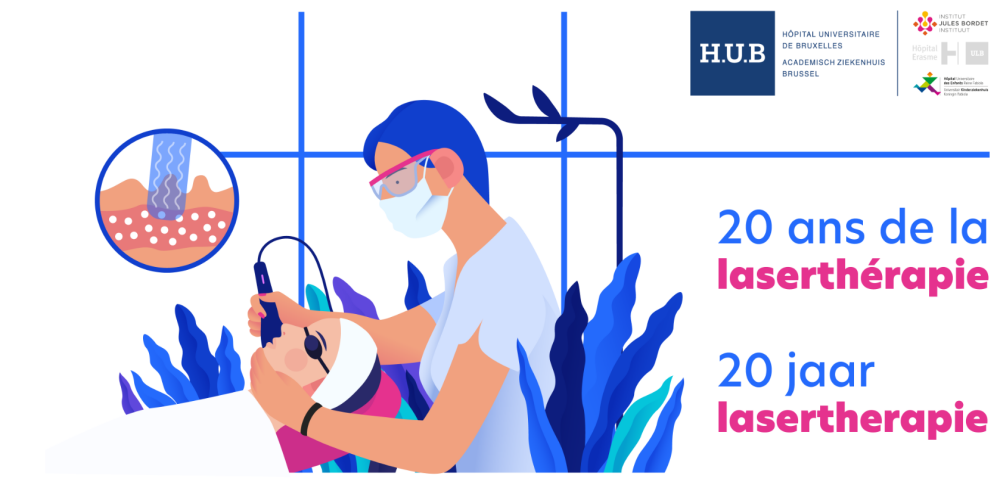20 years of laser therapy at the H.U.B.
News (20/12/2022)
20 years of laser therapy at the H.U.B.
Laser therapy to alleviate the side effects of chemotherapy and radiotherapy.
It was 20 years ago that the Jules Bordet Institute acquired its first laser device to treat the side effects of cancer treatment. The Children's Hospital soon acquired its own equipment with which to treat children with cancer. Today, 20 years later, laser therapy has become an essential element in supportive care for people receiving cancer treatment at the H.U.B. (the Brussels University Hospital). Since 2021, the H.U.B brings together the Jules Bordet Institute, the Erasmus Hospital and the Children's Hospital.

Improving the quality of life for cancer patients
Cancer treatment can cause often very painful side effects. Radiotherapy and chemotherapy sometimes cause an inflammation of the mucous membranes or skin rashes and burning. Adults often suffer from hand-foot syndrome that makes the soles of the feet and the hands very painful. Children are at risk of developing severe mucositis as well as painful skin lesions of the perineum, especially very young children and babies. Laser therapy makes it possible to treat these symptoms and side effects that can prevent a patient from eating or even from continuing with the cancer treatment. Thanks to this painless, non-invasive treatment free of side effects, patients see a marked improvement in their quality of life. Ideally, the sessions, given by physiotherapists or nurses, should start at the same time as the cancer treatment as the laser therapy also plays a major preventive role.
A continuously evolving technology
Discovered and introduced in the medical field in the 1960s, laser therapy devices have evolved greatly over the years. Two types of machines are currently used: the LLT and the LED. The LLLT (low-level laser therapy) devices use short wavelength (630 to 900 mm) red and infrared light radiation. These rays have remarkable qualities: they reduce the oedema, inflammation and pain and also promote tissue healing. The LED devices are equipped with optical fibres for the mouth and a scanning system for the skin. The next stage for the Jules Bordet Institute will be the possible acquisition of a new more efficient machine: the ATP38. This uses light therapy and thus permits an extra-oral treatment that is more comfortable for the nurse and for the patient thanks to improved calibration. The Children's Hospital recently perfected its approach thanks to the Laserpen that permits more rapid sessions that are easier for children. Laser therapy is destined to evolve further within the H.U.B. to improve the quality of life and well-being of the patient.